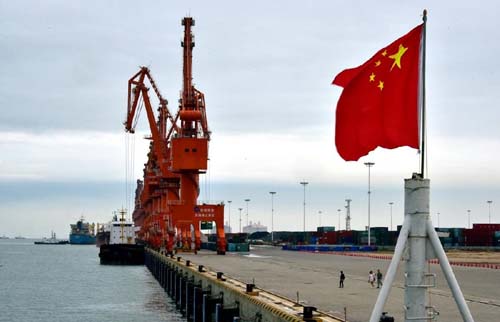
China’s 5.5% GDP target displays resilience and ability against headwinds
Tom Fowdy – China Daily
Over the past weekend, China held its annual two sessions meetings and declared a GDP growth target for 2022 of around 5.5 percent.
The term “two sessions” refers to the annual meetings of the nation’s top legislature, the National People’s Congress, and the top political advisory body, the Chinese People’s Political Consultative Conference National Committee.
Although the GDP target was immediately seized upon by Western mainstream media as being “the lowest in decades”, the goal was set amid a wide range of global challenges which create uncertainty for the global economy, along with the COVID-19 pandemic.
In 2021, China had recovered substantially and attained GDP growth of 8.1 percent, prompting national planners and economists to forecast this year’s lower goal as growth returns to its normal trajectory.
China is increasingly seen as a stable and safe-haven market for investors over the past two weeks, leading to an accelerated flow of inbound capital
However, the GDP target for this year is a sign of strength, as opposed to weakness, and demonstrates the resilience of the Chinese State and its ability to confront headwinds and continue national development unabated.
The Chinese economy is in a significantly better position than its counterparts in the West due to many reasons.

First, China achieved a full-scale economic recovery from the pandemic and ensured stability without having to resort to extreme scale stimulus, as was seen in the United States, the United Kingdom and the European Union.
While these economies invested trillions in order to kickstart growth and consumption, China adopted a more conservative approach and still sustained its growth momentum throughout 2020 and 2021.
This allows the State to preserve its monetary tools for long-term gain at a time when Western economies face high levels of inflation due to their loose stimulus policies. While these economies will be forced to raise interest rates to tackle this situation, China faces no such scenario.
Given this, the decision to opt for a 5.5 percent GDP growth rate this year is a highly realistic goal, and only slightly below China’s pre-pandemic trajectory, and seeks to achieve growth despite the prevailing challenges.
As Western economies are peaking their COVID-recovery trajectories and adopting these tighter monetary policies, it is natural and logical that growth rates all around will be lower.
It is worth noting that China’s growth targets tend to be conservative in nature, as opposed to being extremely optimistic. China plans for worst-case scenarios, not best-case scenarios
However, there are now more headwinds in the mix. The situation in Ukraine has brought about surging energy, commodity and agricultural prices due to a forceful narrowing of the market, all of which will significantly dampen global growth further.
In the case of Europe, growth will be adversely affected by the crisis. This will pose problems for China’s imports and exports alike.
However, China continues to be in a sturdy position to deal with this situation. China is increasingly seen as a stable and safe-haven market for investors over the past two weeks, leading to an accelerated flow of inbound capital.
The Chinese renminbi has surged to a 14-year high against the US dollar, peaking at 6.31. This will improve China’s import prospects against inflation and make the country an important driver of global growth for the year.
This situation is similar to that of 2020, and global markets are extremely turbulent now due to a chronic lack of certainty and security.
China’s domestic policies, geared toward attaining domestic and economic stability, thus act as an important bulwark for many, again making the 5.5 percent GDP target an optimistic, as opposed to a pessimistic, target.
Given this situation, such a goal demonstrates that China has the capacity to steer its economy through an increasingly uncertain global environment and continue to make progress.
It is finally worth noting that China’s growth targets tend to be conservative in nature, as opposed to being extremely optimistic. China plans for worst-case scenarios, not best-case scenarios.
In 2021, the target set by the government was in fact only 6 percent, assuming in advance that the COVID-19 pandemic and other factors would continue to pose global economic disruption. The result was as noted: 8.1 percent GDP growth.
Hence, Western media pessimism over this year’s GDP target should not be interpreted as a setback for China’s growth trajectory.
In reality, the State continues to offer growth prospects which are above that for most of the world. It shows that China’s socialist market economy continues to be a highly well-organized, scientific and resilient system.
The writer is a British political and international relations analyst.
